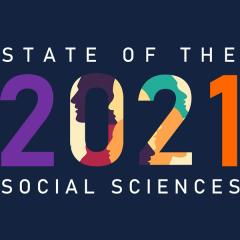The impact of family socio-economic status (SES) on students’ academic performance has been extensively explored in the literature around the world. Accumulated empirical evidence shows that low SES students tend to perform worse academically than their peers from more advantageous backgrounds globally including Australia. Whilst sociologists of education have proposed a number of mechanisms by which family SES may affect students’ educational outcomes, they usually focus on the direct impact of family resources on students’ outcomes. This study investigated the role of a different mechanism – namely, student engagement – in this process, furthering our understanding of how family backgrounds may impact upon students’ academic performance.
Drawing on theoretical perspectives from psychology and sociology, and a major nationally representative longitudinal dataset from Australia (i.e., LSAC, also known as the Growing Up in Australia Study), we conducted a series of multiple regression models to investigate the mediating role of student engagement on the relationship between students’ SES background and academic performance. Specifically, we hypothesised that low-SES students will display lower engagement with school. We further focused on the role of student engagement as a mediator that can explain the effects of students’ SES on their academic performance, measured through scores from the National Assessment Program – Literacy and Numeracy (NAPLAN). Finally, we investigated the extent to which student engagement has an independent effect on current performance, over and above the effect of prior performance, and how this differs by students’ SES.
 In line with our expectations, the results showed significant differences among students from different SES backgrounds across a number of indicators and dimensions of student engagement. Specifically, low-SES students are significantly more likely to have behavioural issues (e.g., being bullied and bullying others, and absent from school) and less likely to like their school and feel that they belong to their school. On the cognitive dimension, low-SES students are more likely to adopt goals and strategies that typically lead to lower achievement (i.e. mastery-avoidance goals) and less likely to adopt strategies that contribute to higher performance (i.e. mastery-approach goals).
In line with our expectations, the results showed significant differences among students from different SES backgrounds across a number of indicators and dimensions of student engagement. Specifically, low-SES students are significantly more likely to have behavioural issues (e.g., being bullied and bullying others, and absent from school) and less likely to like their school and feel that they belong to their school. On the cognitive dimension, low-SES students are more likely to adopt goals and strategies that typically lead to lower achievement (i.e. mastery-avoidance goals) and less likely to adopt strategies that contribute to higher performance (i.e. mastery-approach goals).
Also consistent with previous literature, results from a series of multiple regression models indicate significant effects of SES on NAPLAN Reading and Numeracy scores at Year 7 (age 12). As hypothesised, the SES effect is partially mediated by student engagement but largely persists even when controlling for prior achievement, as captured by the NAPLAN Reading and Numeracy scores at Year 5. Specifically, the impact of SES on NAPLAN Numeracy is partially mediated by behavioural engagement (i.e., reading at home and absence from school) and cognitive engagement (i.e., performance-approach and mastery-avoidance goals); and the impact of SES on NAPLAN Reading is partially mediated by reading at home and mastery-avoidance goals.
The study makes an important contribution to the literature and offers pointers for policy and practice. Theoretically, this research contributes to a better understanding of the mechanisms that operate underlying the impact of student’s SES backgrounds upon their academic performance in the school settings, by highlighting the partial mediating role of student engagement. In particular, our findings may draw practitioners’ attention to the fact that student engagement may vary among students from different SES background, and as such they may tailor their intervention strategies accordingly.
Practically, our findings bring about important implications for educational policy and practice by offering insights into a potential set of interventions in schools that could help mitigate the negative impact of low SES upon students’ academic performance. Specifically, we provide evidence that students from disadvantaged socio-economic backgrounds tend to adopt achievement orientations and strategies that predict poor academic performance, whereas their high-SES peers tend to adopt strategies leading to high performance. Our findings point to the particular role that performance-approach and mastery-approach goals plays in shaping academic performance of low-SES students, a finding to be considered by educational practitioners.
In addition, our findings provide further empirical evidence to support the concerns around the impact of SES on students’ achievement in the Australian context. Whilst some researchers argued that students’ SES effect on performance disappears once controlled for their previous achievement, our findings show that the effect of students’ SES remains significant even after controlling for a range of factors, as well as their previous NAPLAN scores. One implication of this finding is that interventions aimed at mitigating the impact of disadvantaged family backgrounds on students’ educational performance should start as early as possible. For instance, policies should promote a range of classroom strategies to shape children’s motivation goals and build up their engagement with school from early age to improve their initial academic performance.
The full article has been published in the British Educational Research Journal (BERJ). Read it here.



